Introducing People Transformations! See This TikToker, 29, Transform Her Vitiligo into Amazing Art (Exclusive)
“I came to love and appreciate my spots,” Amara Aleman, 29, tells PEOPLE after being diagnosed with vitiligo in 2018
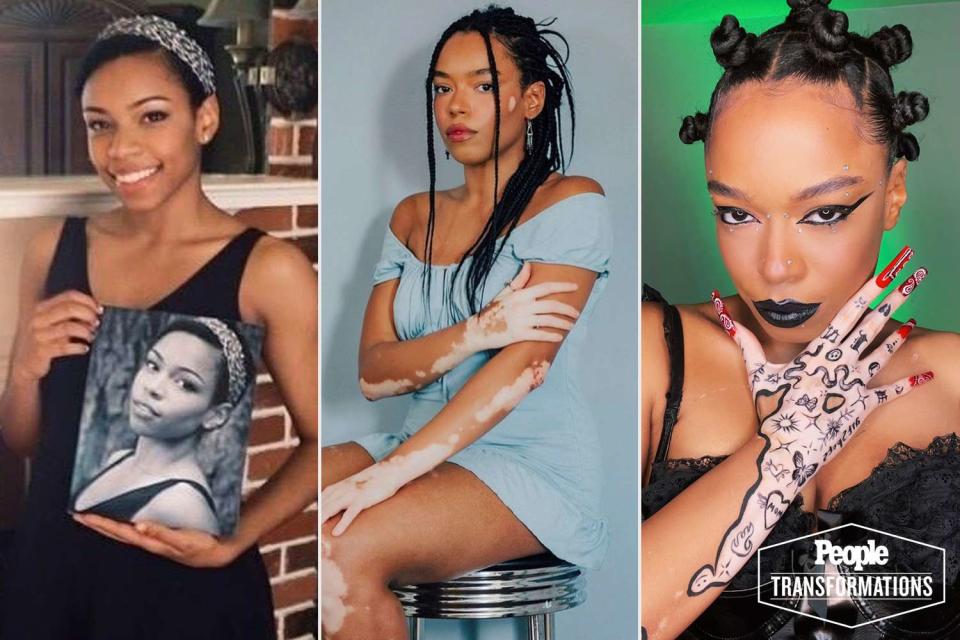
Courtesy Amara Aleman; Joy Masi; Courtesy Amara Aleman
Amara AlemanPEOPLE Transformations highlights extraordinary stories of people who have undergone meaningful changes — physical, emotional or professional — that have helped redefine their lives and brought them a deeper sense of meaning and joy.
Amara Aleman was pursuing her passion as a professional dancer when, in May 2017, she noticed changes in her body —“rapid weight gain, face and eye swelling, and insomnia” — which ultimately led to her being diagnosed with Graves’ disease, an autoimmune disease that affects the thyroid and is closely associated with vitiligo.
Within six months, the first spot appeared on her hand and she was officially diagnosed with vitiligo in early 2018.
“I was a little bit in denial. I went straight to Google and looked at pictures like, ‘There's no way that is going to happen to me,’” Aleman, 29, tells PEOPLE in this week’s issue. “I had gone my whole life looking a certain way, and from one moment to another my whole reality about myself had changed. I was about to embark on this transformation that I didn't ask for.”
Vitiligo is an autoimmune disorder that causes patches of the skin to lose pigment or color, according to the National Institutes of Health. Between .5 and 1% of the global population lives with vitiligo, which tends to progress over time.
Related: Woman Who Used to Be Bullied for Her Vitiligo Turns It Into Art: 'I Can Dispel Its Myths'
Aleman says she felt a “loss of identity” as her skin started to change. She’d always thought vitiligo was beautiful on others, but now she was struggling to process the changes in her own appearance.
So for the first year, she hid — using makeup and wearing long sleeves and pants to hide her spots as more of them began to show up on her arms, legs, and face.
“Once the spots started to appear, they were spreading overnight. I had no time to adjust,” she says. “I spiraled into a very sad and dark place because I felt like the person I was appearing in the world wasn't even me.”
Finding it easier to hide than explain the changes happening to her, Aleman isolated herself and even gave up dancing just to avoid being around other people.
“But hiding was stressful, and that just made it worse because stress elevates vitiligo,” she adds. “When you wake up every day and the first thing you're thinking of is to hide yourself. It definitely took a toll on me mentally.”
Related: Woman Transforms Vitiligo Into Body Art: 'If I Could Just Show People How Beautiful This Looks'
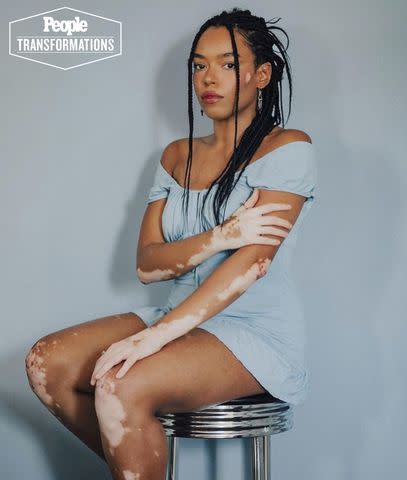
Joy Masi
Amara AlemanIt wasn’t until a year after her diagnosis that Aleman started to accept her new reality. One day in early 2019 she sat in her Providence, R.I. home sewing and embellishing a costume. Staring at the spots on her hands as she worked, Aleman burst into tears.
“I just broke down and cried,” she recalls. “It was the first time it truly hit me and fully sank in that this is now a part of my physical identity.”
From that point, Aleman credits her parents — mom, Dansis Acevedo, and dad, Jose Aleman — with helping her come to terms with her new reality. “They reminded me that my physical appearance is only part of my story — and it’s not the most important piece.”
With their support, and the support of her boyfriend of three years Joseph Velez, 29, who “helped me take the first step of showing my spots in public,” Aleman was encouraged to use her artistry to adjust.
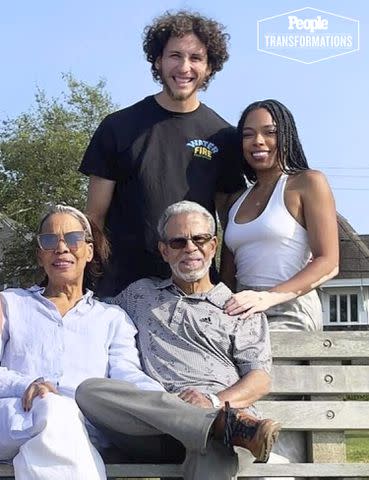
Courtesy Amara Aleman
Amara Aleman with her boyfriend Joseph Velez and parents Dansis Acevedo, Jose Aleman“You kind of just have to embrace the change,” she says. “My creative voice is more important than just my physical vessel.”
So Aleman, who had always gravitated to art and drawing as a kid, started using body paint to enhance her vitiligo with designs she calls ArtSpots.
“I started experimenting with outlining my spots, taking time to really look and embrace them. It forced me to accept it and highlight it in a way that made it real for me. It became a therapy,” she explains. “Once I did that for long enough, I actually came to love and appreciate my spots. I feel like I'm a better person because of what's happening to me.”
Never miss a story — sign up for PEOPLE's free daily newsletter to stay up-to-date on the best of what PEOPLE has to offer, from celebrity news to compelling human interest stories.
Drawing inspiration from her favorite childhood TV shows — “I always fantasized about Raven-Symoné’s character on That’s So Raven, her fashion sense, glitter, bold colors” — Aleman’s designs bring to life the “super girlie girl” she could never be as a kid.
“In my everyday life, I’m shy, introverted, my sense of style is a little more muted,” says Aleman. “But when I’m creating ArtSpots, I embrace my vitiligo in a way that puts them in the forefront of what I’m wearing. I kind of take on an alter ego who’s not afraid to embody her most confident self.”
In September 2021, Aleman decided to share her ArtSpots with the world, posting a video on TikTok that went viral overnight and led to her current 287,000 followers and 14.4 million likes.
Now, as a content creator, not only does she share her ArtSpots, she uses her platform to educate others on vitiligo and self-acceptance.
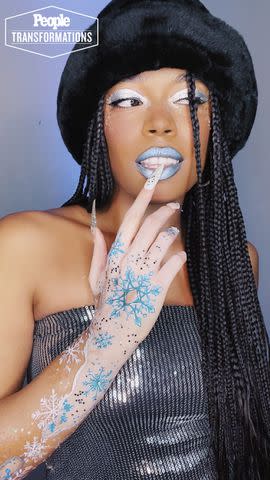
Courtesy Amara Aleman
Amara "ArtSpots"Related: FDA Grants Approval to First Treatment for Vitiligo
“There's a lot of misconceptions about what vitiligo is,” says Aleman. “I'm still kind of learning myself. So as I learn, I do like to share and educate because there isn't a lot of information about it out there.”
“It's crazy getting private messages from people with vitiligo who would tell me, ‘Seeing this has helped me accept my skin,’ or ‘I'm going to try this with my daughter who has vitiligo. I think it's going to really help her.’ Those kinds of messages made me feel like if I keep showing up and more people with vitiligo see this, maybe it could save someone from feeling the way that I felt when I was first diagnosed,” she continues.
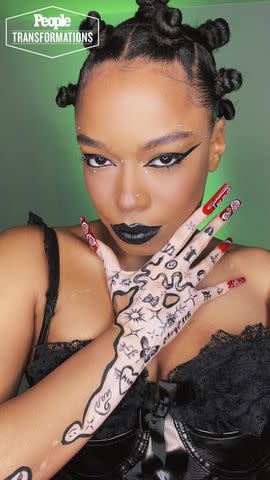
Courtesy Amara Aleman
Amara "ArtSpots"Aleman tells PEOPLE that through her social media presence, she’s also connected with other content creators, like Sharon King with the Litty Ligo Vitiligo Community Network, who have inspired her journey and even helped with her own confidence.
Today, she reflects on how it was “draining and a disservice” to initially hide herself, urging her TikTok followers — even those without vitiligo — not to do the same.
“I've always been creative, but had a hard time communicating that,” Aleman says. “My vitiligo was the key to unlocking this journey to share my creativity with the world, and it aligns perfectly with the story that I was meant to share.”
For more on Amara Aleman, pick up the latest issue of PEOPLE, on newsstands Friday, or subscribe here.
For more People news, make sure to sign up for our newsletter!
Read the original article on People.

